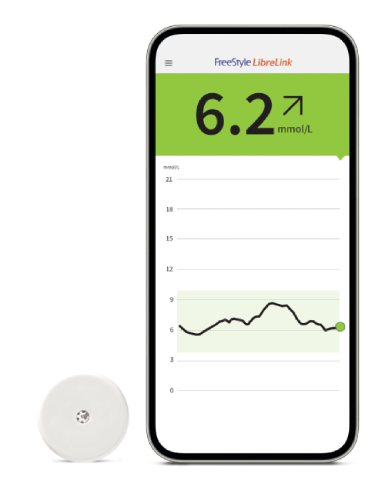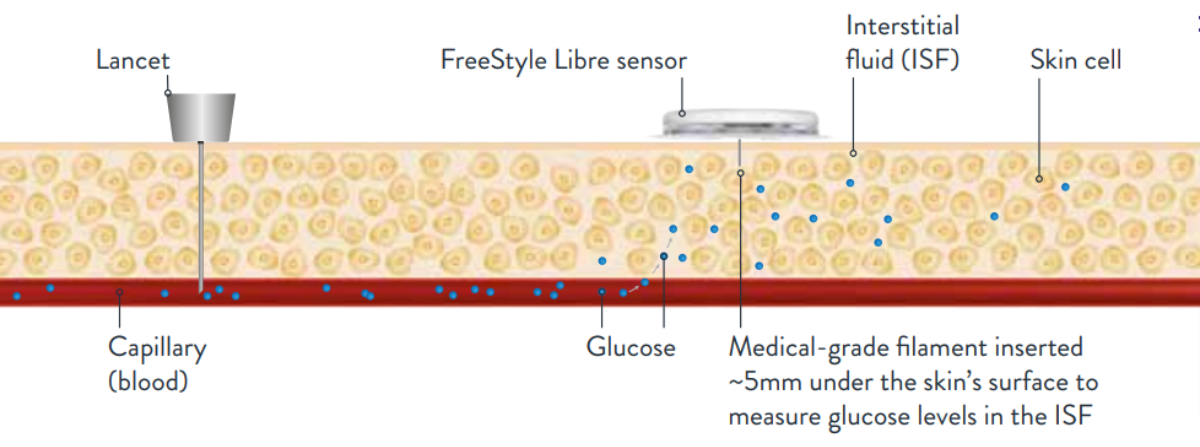FREESTYLE LIBRE
(CGM) COMPARED
TO BLOOD GLUCOSE
MONITORING (BGM)1
BGM only gives you a snapshot of your blood glucose, at a single point in time. Glucose monitoring with FreeStyle Libre provides a more complete picture of trends and patterns without finger prickings.2,3


How does the sensor reading compare with a blood glucose reading?
Traditional Blood
Glucose Monitoring
Measures the glucose levels in the blood (capillary).
- A lancet is inserted to reach the blood in the capillary.
- A finger prick only provides one measurement at one point in time.
The FreeStyle Libre system
Continuously measures the glucose levels in the interstitial fluid (ISF): the fluid between the cells under the skin.
- Glucose readings based on interstitial fluid have been shown to reliably reflect glucose levels.
- The sensor records glucose reading every minute, even when you're sleeping.


Let’s use a train to demonstrate “the lag”
FreeStyle Libre gives a more complete picture of your glucose:


Why 7 million people* choose FreeStyle Libre?


REFERENCES AND DISCLAIMERS:
*Data on file, Abbott Diabetes Care, Inc. Based on the number of users worldwide for the FreeStyle Libre portfolio compared to the number of users for other leading personal use sensor-based glucose monitoring systems.
- Ajjan R, et al. Adv Ther 2019;36:579-596.
- Finger pricks are required if glucose readings do not match symptoms or expectations
- Unger J, et al. Postgraduate Medicine 2020;132:305-313.
- Basu A. et al. J Diabetes Sci Technol 2015; 9(1): 63-68.
- Haak, T. Diabetes Therapy (2017): https://doi.org/10.1007/s13300-016-0223-6.
- 60-minute warm-up required when applying the sensor.
- Sensor is water resistant in up to 1 meter (3 feet) of water. Do not immerse longer than 30 minutes.
- Edge, Julie., et al. An alternative sensor-based method for glucose monitoring in children and young
- people with diabetes. Archives of Disease in Childhood 102.6 (2017): 543-549
- Vincze G, et al. Diabetes Educ 2004;30(1):112-125.
- Wagner J, et al. J Diabetes Technol Ther 2005;7(4):612-619.
- Brixner D, et al. Clinical Therapeutics 2019;41(2):303-313.
- Foster NC, et al. Diabetes Technol Ther 2019;21(2):66-72.
© 2024 Abbott. All Rights Reserved. The sensor housing, FreeStyle, Libre, and related brand marks are trademarks of Abbott. ADC-104670 v1.0.






